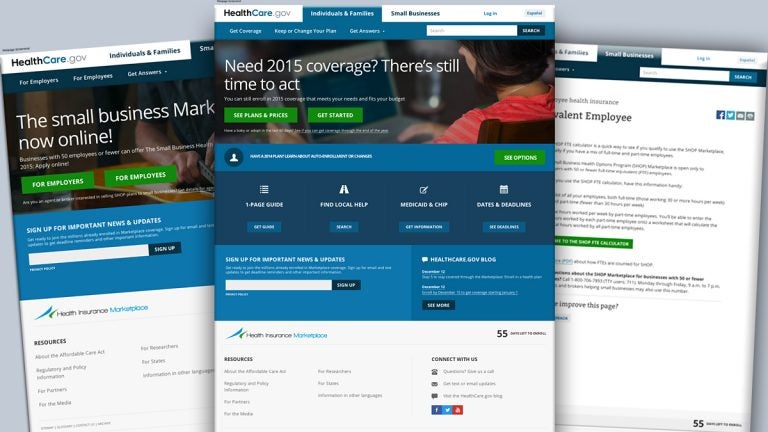Health care in New Jersey underwent major changes in 2014

Healthcare.gov
More New Jerseyans than ever have health insurance as 2014 comes to an end; perhaps the most important change in an eventful year for health care in the state.
Along with soaring insurance rolls, the state saw a major shift in how it provides long-term services to Medicaid recipients, due to a comprehensive federal waiver that is intended to concentrate care in residents’ homes and communities rather than in nursing homes.
But much more happened throughout the year to change how health care policy affects residents. This included lively policy debates centered on the expansion of for-profit hospitals; what steps the state should take to counter a rising number of deaths from overdoses of opioid drugs; and how the state should handle the ongoing Ebola virus crisis.
More than 500,000 state residents gained insurance due the expansion of Medicaid eligibility and the federally operated individual marketplace, healthcare.gov, essentially cutting the uninsured rate in half.
While 161,775 enrolled in marketplace plans through April, policy advocates were sharply critical of a decision by Gov. Chris Christie’s administration to allow $7.67 million in federal ACA funding to be returned to the federal government. While advocates and federal officials said the money could have been used for marketplace outreach, state officials fruitlessly sought to use it to offset state costs related to Medicaid expansion.
The marketplace saw two new insurers in 2014: Health Republic Insurance of New Jersey, joined the marketplace in January, and Oscar Health Insurance began selling its own marketplace insurance later in the year. Policy analysts expressed hope that the increased competition would contribute to lower insurance costs, in addition to more options for consumers.
The Medicaid eligibility expansion was the primary way that more residents became insured, with 382,077 additional residents covered by Medicaid by the end of November, reaching a total of 1.67 million Medicaid recipients.
But the state was also plagued by backlogs in processing applications for Medicaid coverage, with some counties building multiple thousand-applicant backlogs throughout the year. These problems were complicated by an ongoing failure to launch the state’s new computer system for tracking recipients of Medicaid, food stamps, and other social services.
In addition to those who receive health insurance for trips to doctors’ offices and hospitals through Medicaid, many others receive long-term services and supports from the program. On July 1, the state shifted to a managed-care approach for these patients, in which insurers to aim to provide services in residents’ homes or in community centers rather than in nursing homes. The transition, which is part of the state’s five-year Medicaid comprehensive waiver, appeared to go smoothly, although it remains to be seen whether the change will result in the budget savings that were once projected from it.
Long-term care received a critical assessment from AARP, which in a report card found that New Jersey was among the worst-performing states in terms of the percentage of high-risk nursing home residents with bedsores. Industry advocates responded that nursing homes have already put policies in place that should lead to an improved ranking in future years.
AARP scored a legislative victory when it successfully advocated for a new law that will provide more information to caregivers when senior patients leave the hospital.
While the number of residents covered by Medicaid was driven by federal changes resulting from the Affordable Care Act, developments in New Jersey may determine how effective the health care that the sickest Medicaid recipients will be in the future.
___________________________________________________
NJ Spotlight, an independent online news service on issues critical to New Jersey, makes its in-depth reporting available to NewsWorks.
WHYY is your source for fact-based, in-depth journalism and information. As a nonprofit organization, we rely on financial support from readers like you. Please give today.




